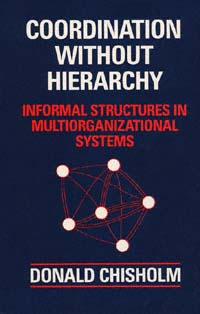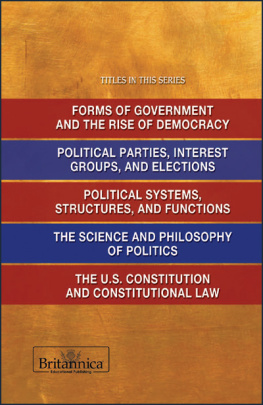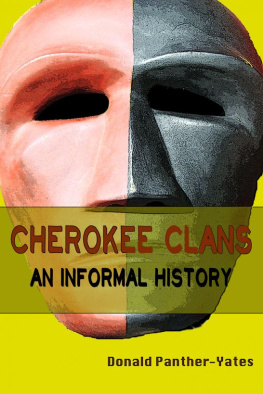| Coordination Without Hierarchy Informal Structures in Multiorganizational Systems Donald Chisholm UNIVERSITY OF CALIFORNIA PRESS Berkeley Los Angeles Oxford 1992 The Regents of the University of California |
CONTENTS |
1 Multiorganizational Systems |
2 Formal Failures and Informal Compensations |
3 The Problem of Interdependence |
4 Informal Coordinative Mechanisms |
5 The Fruits of Informal Coordination |
6 Factors Facilitating Informal Organization |
7 Informal Weaknesses and Formal Compensations |
8 Coordination and Tradeoffs with Other Goals |
Appendix B Formal Structures and Responsibilities of the Major Bay Area Public Transit Operators |
Appendix C The Metropolitan Transportation Commission |
Appendix D The Regional Transit Association |
Preface
It is remarkable that political science and public administration seem only recently to be discovering (or rediscovering) what sociologists have known all along: informal aspects of organization are not only powerful determinants of behavior within and among organizations but possess characteristics rendering them effective as instruments for such tasks as coordination. The trend among some public choice theorists toward assumptions of multiple encounters of interdependent actors and the evolution of powerful behavioral norms, along with increasingly sophisticated discussions of organizations as political coalitions, are but two encouraging examples of this (re)discovery. Why has the pathbreaking work of the Hawthorne studies, or the subsequent work of Fenno and others on legislatures, waited so long to be integrated into research on problems of collective action and the design of formal organizations? Perhaps the delay is a phenomenon most readily explained as the result of different paradigmatic approaches to slightly dissimilar problems: the sociological approach, along with that of cognitive psychology, versus the microeconomic approach.[1]
The approach taken in this study is intentionally pragmatic and opportunistic, moving from a specific practical problem in the real world of politics and public administrationthe coordination of the public transit system of the San Francisco Bay Areato a direct and practical solution and a foundation for a generalizable theory of coordination by informal mechanisms. In so doing it borrows liberally from contemporary and earlier efforts in other domains. In this conjunction of finding solutions to the practical problem with developing
xii
general scientific propositions, I would like to think that I am continuing in the tradition of Charles E. Merriam and the other progenitors of modern political science.
My approach is characterized by observation of how decision makers actually behave, rather than reliance on a closed deductive analytical system replete with a full complement of assumptions about human behavior. In this regard, I take seriously Wesley Mitchell's critical comments about the economists of his time:
Their habit has been to set up simplified conditions in their imaginations, and draw conclusions about what would happen in an unreal worldconclusions that cannot be refuted by an appeal to actual experience.[2]
I am less interested in finding out what an already well developed deductive theory might have to say about some problem to which it has not yet been applied than in developing a relatively powerful theory that explains that problem. Nor did I feel it appropriate to study the relevant organizations and their activities from a distance; I employed direct personal (what Fenno calls interactive) observation to bring me closer to the data.[3]
I have borrowed freely from whatever theories seemed most useful for understanding the problem. My debt is greatest to sociology and social psychology, but I also owe something to theories of public choice. In the tradition of Herbert Simon, I take generally conservative, even pessimistic, positions on the extent of individual human capacities for rationality; the availability of information to decision makers; and human capacity to design and administer effective, large-scale, formal organizations in the face of complex problems.[4]
In the research reported here, I used an intensive analysis of activities in the public transit systems of the San Francisco Bay Area and Washington, D.C., to generate a series of broader theoretical statements about problems of coordination and their resolution in multiorganizational systems more generally. The theory was only partially developed when the research commenced, and theory building became intimately intertwined with data collection. I followed Darwin's dictum: "Science consists in grouping facts so that general laws or conclusions may be drawn from them."[5] In this sense, this essay does not adhere closely to the standard presentation of results found in most scientific papers. My account reflects the actual devel
xiii
opment of the theory, that is, the argument more closely follows the "logic-in-use" than the "reconstructed logic of presentation."[6] In this breach I hope I will be indulged by those interested in the material and forgiven by those less patient.
My conclusions and recommendations may be regarded by some as extreme and radicalat a minimum they will be considered counterintuitivegiven traditional approaches to the problem of coordination and current prevailing wisdom in the public administration. My hope, however, is that at least some of them will be recognized as practical, pragmatic proposals concerning the often intransigent problem of coordination.
Although books are mostly solitary endeavors, one usually has more collaborators than one realizes. This essay is no exception. In its lengthy gestation I incurred considerable debts to many people for many reasons.
I wish first to thank the men and women of the public transit systems of the San Francisco Bay Area and the Washington Metropolitan Area for their gracious participation in this study. They often made time for my questions in the midst of pressing job demands. Without their active assistance, this study would have been impossible.
Thomas Cordi, James Desveaux, and David Richman each contributed their support and criticism as the project began to take shape. Charles Ostrom and Jack Knott provided needed encouragement and advice during a later, very difficult period of writing. Nelson Polsby and Melvin Webber each contributed their sage counsel during the project's early stages, while throughout Jack Citrin performed the difficult dual roles of friend and critic. Steve Erie contributed valuable advice about writing as I began the inevitable revisions.
Next page












